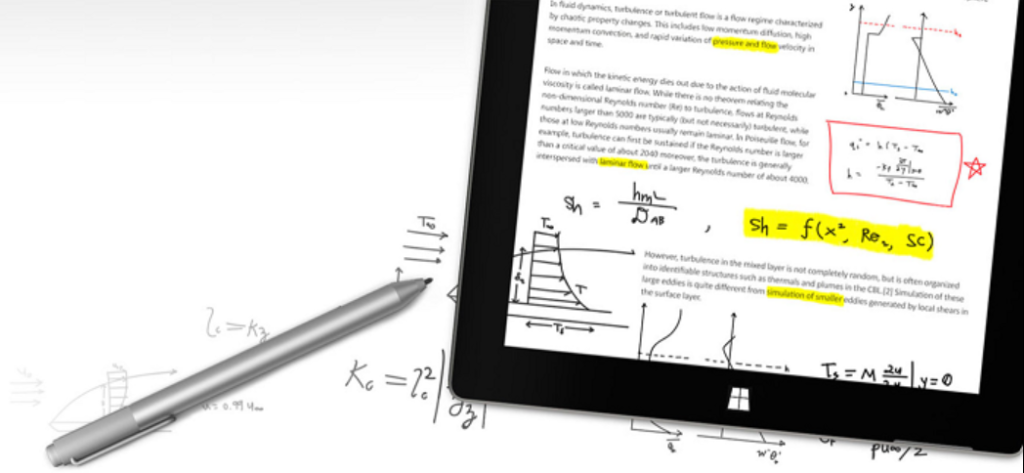Boost Productivity and Creativity Using Microsoft Ink’s Pen Features
It seems that you’re interested in learning more about a Microsoft page that highlights their innovative “Ink technology”. This powerful tool is likely related to Microsoft Ink, a feature that enables users to create and interact with digital handwriting and drawings. However, the link you have appears to be incomplete or incorrectly formatted, which might be causing some confusion. To assist you better, we recommend double-checking the URL for accuracy. A correctly formatted URL could look something like this: https://www.microsoft.com/ink.
Understanding Microsoft Ink: How It Works and What It Offers

Microsoft Ink, more commonly recognized as Windows Ink, is a powerful feature embedded within Windows operating systems. It allows users to leverage the potential of a stylus or digital pen to enhance productivity and creativity. Whether you’re jotting down notes, sketching out ideas, or annotating documents, Microsoft Ink provides a seamless and intuitive experience. Here’s a detailed look at how it operates and the unique capabilities it brings to your device:
Seamless Stylus Integration
Windows Ink is designed to integrate effortlessly with your stylus, offering a natural and fluid writing and drawing experience on compatible Windows devices. This integration ensures that whether you’re writing, drawing, or navigating, the interaction feels as close to pen and paper as possible.
Centralized Workspace: The Windows Ink Hub
At the heart of Windows Ink is the Windows Ink Workspace—a dedicated hub that brings together all the ink-powered features you need. From here, you can quickly access tools like Sticky Notes, Sketchpad, and Screen Sketch, enabling you to interact with your device in a more intuitive and creative way.
Advanced Handwriting Recognition
One of the standout features of Microsoft Ink is its ability to convert handwritten notes into typed text effortlessly. This handwriting recognition feature not only enhances accessibility but also boosts productivity, particularly in applications like Microsoft Office, where converting handwritten content into digital text can save you time and effort.
Direct and Intuitive Screen Interaction
Microsoft Ink allows you to interact directly with your device’s screen, making tasks such as annotating documents, drawing diagrams, or navigating through applications more efficient and intuitive. This direct interaction helps bridge the gap between digital and physical workflows.
Enhanced Precision with Pressure Sensitivity and Palm Rejection
For those who require precise control, Microsoft Ink supports pressure sensitivity and palm rejection. These features ensure that your writing or drawing is as accurate and comfortable as possible, whether you’re lightly sketching or applying more pressure for bold strokes
Comparing Microsoft Ink to Other Tools
Microsoft Ink is an integral part of the broader Microsoft ecosystem, often used with Surface devices and other pen-enabled hardware. Here’s how it stacks up against some of the other popular digital writing and drawing tools:
1. Microsoft Ink vs. Adobe Photoshop

- Purpose: While Microsoft Ink is designed for note-taking, sketching, and general use, Adobe Photoshop is a powerhouse for professional digital artists and photographers. Photoshop caters to those needing advanced photo editing, digital painting, and 3D design tools.
- Features: Microsoft Ink offers user-friendly tools that are easy to pick up, making it ideal for casual users. On the other hand, Photoshop’s extensive feature set, though more complex, provides unparalleled functionality for creative professionals.
- Usability: With its intuitive interface, Microsoft Ink is accessible to all, including those who might be new to digital drawing. Photoshop, however, requires a steeper learning curve but rewards users with advanced capabilities.
- Integration: Microsoft Ink integrates seamlessly with Windows and other Microsoft products, making it perfect for users deeply embedded in the Microsoft ecosystem. Photoshop, while cross-platform, is best utilized within Adobe’s Creative Cloud environment.
2. Microsoft Ink vs. Apple Pencil with Notes
- Device Compatibility: Microsoft Ink is a Windows-focused tool, compatible primarily with Surface devices and other Windows-based hardware. In contrast, the Apple Pencil is exclusive to iPads, offering a different ecosystem experience.
- Functionality: Both tools offer excellent stylus input, but the Apple Pencil is often praised for its precision and low latency, essential for detailed artistic work. Microsoft Ink excels in note-taking and general productivity tasks, making it a versatile option for various needs.
- Integration: Apple Pencil integrates tightly with iOS features like Scribble, allowing handwriting input across various apps. Microsoft Ink, meanwhile, integrates seamlessly with Windows features such as Sticky Notes and OneNote, making it ideal for users within the Windows ecosystem.
3. Microsoft Ink vs. Google Keep
- Purpose: Google Keep is primarily a note-taking service that offers some basic drawing capabilities, similar to Microsoft Ink’s functionality. However, Microsoft Ink provides more advanced tools tailored specifically for pen input.
- Features: While Google Keep shines in its ability to sync notes across devices and offers straightforward sketching, it lacks the depth and sensitivity controls available in Microsoft Ink, which is designed for more sophisticated stylus interactions.
- Platform: Google Keep is platform-agnostic, making it a great choice if you switch between devices frequently. Microsoft Ink, however, is deeply integrated into the Windows platform, offering a cohesive experience for those who use Windows devices.
The right choice between Microsoft Ink and other similar tools largely depends on your needs, professional requirements, and the devices you use. Microsoft Ink is particularly strong in its integration with Windows and its ease of use, making it an excellent choice for educational and business settings. For more advanced creative work, tools like Adobe Photoshop or specialized hardware like Wacom tablets might be more suitable
Troubleshooting Common Microsoft Ink Issues
While Microsoft Ink enhances the user experience on touch-capable devices, you may encounter a few common issues. Here’s how you can troubleshoot them effectively:
1. Pen Not Working or Writing Smoothly
- Solution: Start by checking if your pen is compatible with your device and ensure the batteries are charged. If the issue persists, try calibrating the pen by navigating to Settings > Devices > Pen & Windows Ink > Calibrate. This can help adjust the pen’s accuracy.
2. Ink Not Appearing in Apps
- Solution: Ensure that your device’s drivers and Windows are up to date, as updates often include bug fixes that can resolve pen functionality issues. Additionally, check the compatibility of the app you’re using, as not all applications support Windows Ink.
3. Jittery Lines or Poor Precision
- Solution: You can improve pen responsiveness by adjusting settings in Settings > Devices > Pen & Windows Ink. If you’re still experiencing issues, try using the pen on a different part of the screen or on a different device, as sometimes the surface can affect performance.
By addressing these common problems, you can make the most of Microsoft Ink’s capabilities and enjoy a smoother, more productive experience.
Key Features of Microsoft Ink

Microsoft Ink, known officially as Windows Ink, is designed to enhance the experience of users with touch-enabled devices. Here are some of the standout features:
1. Pen Support
Windows Ink is built to fully leverage stylus input, allowing you to write directly on your device as if you were using traditional pen and paper. Whether you’re drawing, annotating, or taking notes, the experience is intuitive and responsive.
2. Windows Ink Workspace
The Windows Ink Workspace is your go-to hub for all pen-related activities. It offers quick access to applications like Sticky Notes, Sketchpad, and Screen Sketch, all of which are optimized for pen input. You can open this workspace easily by clicking the pen icon in the system tray.
3. Sticky Notes
Sticky Notes in Windows Ink lets you create and manage virtual notes. These notes can be typed or handwritten, making them perfect for quick reminders or tasks. The app even integrates with Cortana to provide intelligent insights, like reminders or calendar events based on your notes.
4. Sketchpad
Sketchpad is a versatile drawing tool that provides a blank canvas for your creative ideas. With various pen types, colors, and even a ruler tool, you can create structured drawings or freehand sketches with ease.
5. Screen Sketch
Screen Sketch allows you to capture screenshots and annotate them directly using your pen. This feature is particularly useful for providing feedback, creating instructional content, or working on creative projects.
User Experience with Microsoft Ink

Microsoft Ink, also referred to as the Microsoft Pen Protocol or technology behind the Microsoft Surface Pen, is crafted to enhance how users interact with touch-capable devices, especially within the Microsoft Surface lineup. Here’s what users typically experience:
1. Natural Writing Feel
Many users praise Microsoft Ink for its close replication of the natural pen-on-paper feel. This is especially true on Surface devices, where the combination of smooth glass surfaces and precise pen input offers an exceptional writing experience.
2. Seamless Integration with Windows
The pen works seamlessly with a variety of Windows applications, including OneNote and Microsoft Whiteboard, making it a powerful tool for boosting productivity and creativity.
3. Long Battery Life
Microsoft Ink-enabled pens typically have long battery lives, though this can vary depending on the model. Some pens use replaceable AAAA batteries, while others are rechargeable, offering flexibility depending on your needs.
Conclusion
Microsoft Ink boosts productivity and creativity with seamless stylus integration, making note-taking, drawing, and annotating effortless on Windows devices.
FAQs
1. What is Microsoft Ink?
A Windows feature for writing and drawing with a stylus.
2. How does it help?
Enhances productivity with tools for notes, sketches, and annotations.
3. Which devices work with Microsoft Ink?
Windows devices with stylus support, like Surface tablets.
4. Can it convert handwriting to text?
Yes, it can convert handwritten notes to typed text.
5. What if my stylus isn’t working?
Check compatibility, battery, and calibration settings.
6. How do I open Windows Ink Workspace?
Click the pen icon in the system tray.
7. Is it good for professional art?
It’s better for general use; professionals might prefer advanced tools.
8. How to fix issues with Microsoft Ink?
Update drivers, check app compatibility, and adjust settings.







